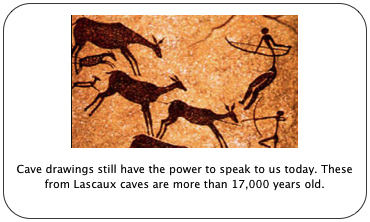A recent book from Martha Bayles, a lecturer in humanities at Boston College, tackles the question of how American entertainment industry products confound official U.S. government efforts to represent the nation to...
KEEP READINGThe CPD Blog is intended to stimulate dialog among scholars and practitioners from around the world in the public diplomacy sphere. The opinions represented here are the authors' own and do not necessarily reflect CPD's views. For blogger guidelines, click here.
Culture Posts: Capturing the Ahh and Aha! Experience in Cultural Diplomacy
In previous Culture Posts, I talked about the goal of developing an “in-awareness” approach to culture in public diplomacy. In the comments section, as well as other CPD posts, important observations have been raised about the challenges of cultural diplomacy. Developing a stronger “in-awareness” approach may be the key to designing and implementing rewarding cultural diplomacy initiatives.
In this post I discuss the idea of thinking about culture as a concrete noun as one way to develop awareness.
Culture as a Concrete Noun
When I talk about culture, some may immediately ask, what is culture?
That question may be easier asked than answered. Back in 1952, anthropologists had counted more than 162 definitions with more than 300 variations. More recently, anthropologists have been debating whether culture is a noun, adjective or verb.*
As a noun, culture is viewed primarily as a static thing or object. As an adjective, culture can be viewed as dominant traits and cultural practices. Culture as a verb highlights the dynamic, evolutionary view of culture. Each of these are different ways of thinking about culture and have multiple implications for public diplomacy.
Culture as a noun or object is interesting in public diplomacy when one considers the nature of English-language nouns as concrete or abstract.
Culture as a concrete or tangible noun may immediately bring to mind cultural artifacts and artworks – paintings, sculpture, music, dance, or other types of artistic expression. Art is often the vehicle of choice in building bridges in cultural diplomacy.
Recognizing Ahh and Aha! Moment
Many speak about the power of culture in creating mutual understanding. But why is that? And why do some initiatives succeed and not others?

If one thinks about it, artwork by nature should be a powerful tool for connecting with other humans – regardless of culture. Art is designed to communicate. It is a form of human expression, usually of emotion. Art is also by nature designed to be aesthetically appealing to the senses. By arousing emotions and senses, the ultimate goal of art is to engage and then capture the human imagination.
Most art work is capable of producing an “Ahh” moment. The “Ahh” moment is one of appreciation, or that instance when our imagination has been captured.

Cultural diplomacy can take the inherent power of art and transform it from an “Ahh” moment of appreciation found in one cultural setting to an “Aha!” moment of delight and wonder in other cultural settings. “Aha!” moments occur when we reconcile seemingly incongruent items.
What at first seems strange suddenly becomes familiar. What we were convinced was impossible, suddenly happens. Similar to the punch line in a joke, we get it. We understand.

While I have used art as the focus to illustrate the “Ahh-Aha!” connection, I suspect other cultural nouns such as sports or technology may share this phenomenon.
Diplomats play a critical role as cultural boundary spanners by identifying potential opportunities for creating an “Ahh-Aha!” connection. They are able to unpack the significance on each side and repackage it so that the other understands. Perhaps cultural diplomacy is as much about process as product.
In future posts I would like to talk more about how diplomats serve as boundary spanners between the “Ahh” and “Aha!” cultural experience. I also need to discuss the challenges of culture as an abstract noun in public diplomacy. In the meantime, it would be good to hear from professionals about their experiences with one or more specific initiatives. Perhaps you could contribute a 500-word Culture Post on your observations and experience? (You can submit your posts to along with a brief biosketch and photo to the Blog Manager, lemar@usc.edu).
* That anthropologists are discussing the global phenomenon of culture in English-language grammatical terms is somewhat revealing.
Visit CPD's Online Library
Explore CPD's vast online database featuring the latest books, articles, speeches and information on international organizations dedicated to public diplomacy.
POPULAR ARTICLES
-
March 22
-
February 23
-
February 22
-
April 1
-
March 4
Join the Conversation
Interested in contributing to the CPD Blog? We welcome your posts. Read our guidelines and find out how you can submit blogs and photo essays >.













